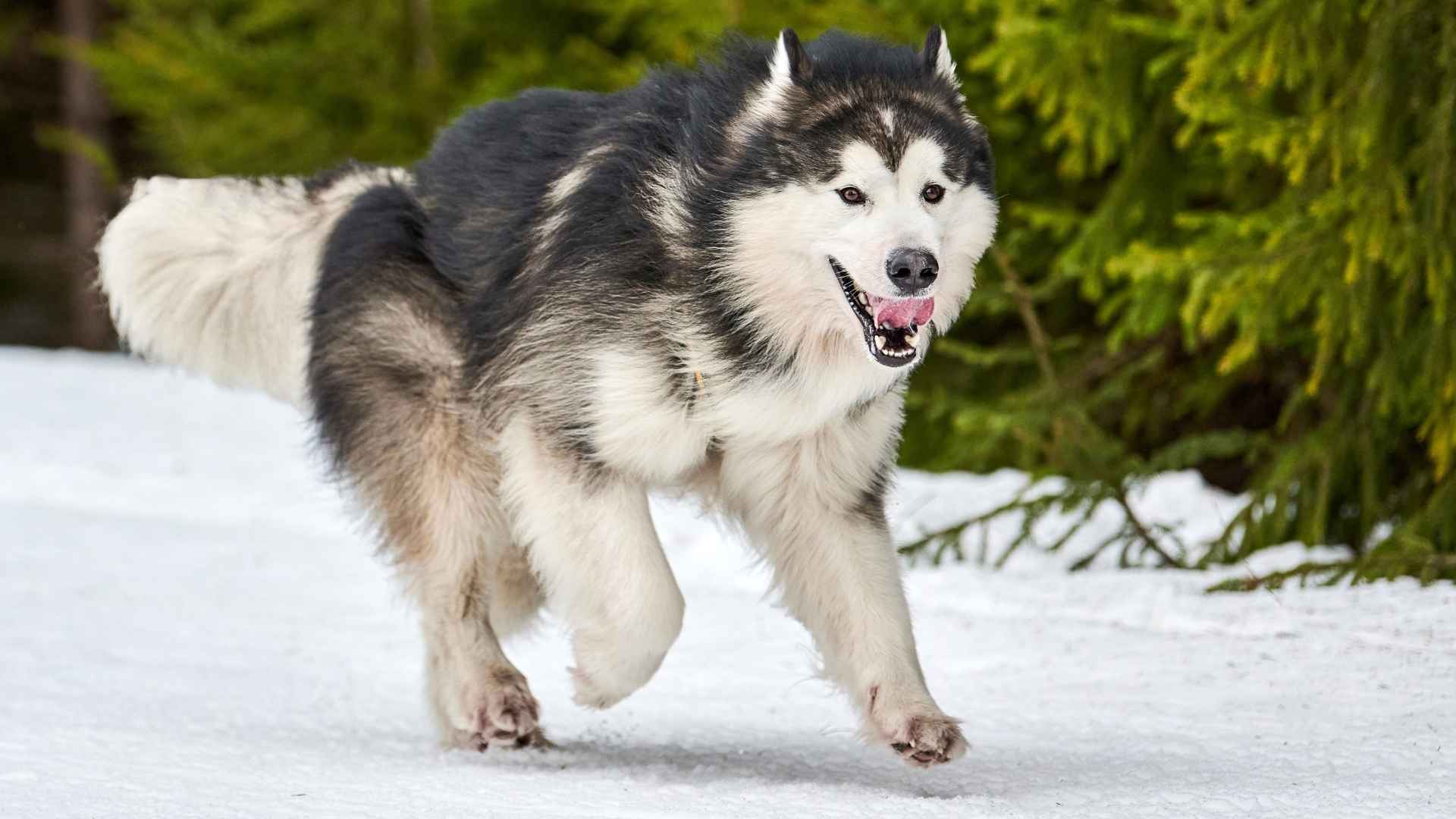When you think of raw canine power, what comes to mind? Massive jaws, muscular frames, and unstoppable energy? While a dog bite is often considered a sign of strength, it’s tricky to measure in real-life situations. What’s clear, though, is that some dog breeds are simply built differently—larger, heavier, and naturally stronger than the rest.
These aren’t just cuddly companions; they’re true powerhouses with a purpose. From hauling heavy loads to guarding homes and even assisting in rescue missions, the World’s strongest dog breeds are known for their impressive strength, endurance, and loyalty. Whether you admire them for their working abilities or their commanding presence, these dogs stand out in every way.
Curious to know which breeds top the list when it comes to sheer might? Get ready to meet the ultimate canine champions who bring both brawn and heart to the table!
Most Strongest Dog Breeds in the World
1. Rottweiler
Did you know the Rottweiler’s roots go all the way back to ancient Rome? These dogs are believed to be descendants of Roman drover dogs, bred to move cattle and guard supplies. Fast-forward to medieval Germany, and you’d find Rottweilers working alongside butchers, protecting their goods and even carrying money in little neck pouches—earning them the nickname “Butcher’s Dog.”
By the 19th century, trains replaced cattle drives, and Rottweilers nearly disappeared. Luckily, the early 20th century brought a major comeback! These sturdy pups found new jobs in police work, military roles, and even therapy. That’s right—under all that muscle is a heart big enough to heal.
As noted by WebMD, Rottweilers were bred for serious tasks, such as livestock guardianship and guard dogs. Ancient Romans also used Rottweilers during battle. That required not just strength but smarts and courage, too. Modern Rotties still carry that same strong-willed, focused personality, especially as they mature. And while they’re not huge on barking or silly games, they’ll happily take on a challenge.
Let’s set the record straight: Rottweilers are not the villains they’re sometimes made out to be. Sure, they look tough (and they are), but they’re also loyal, affectionate, and eager to please. With proper training, these pups become confident, calm companions who take their job of guarding their people very seriously.
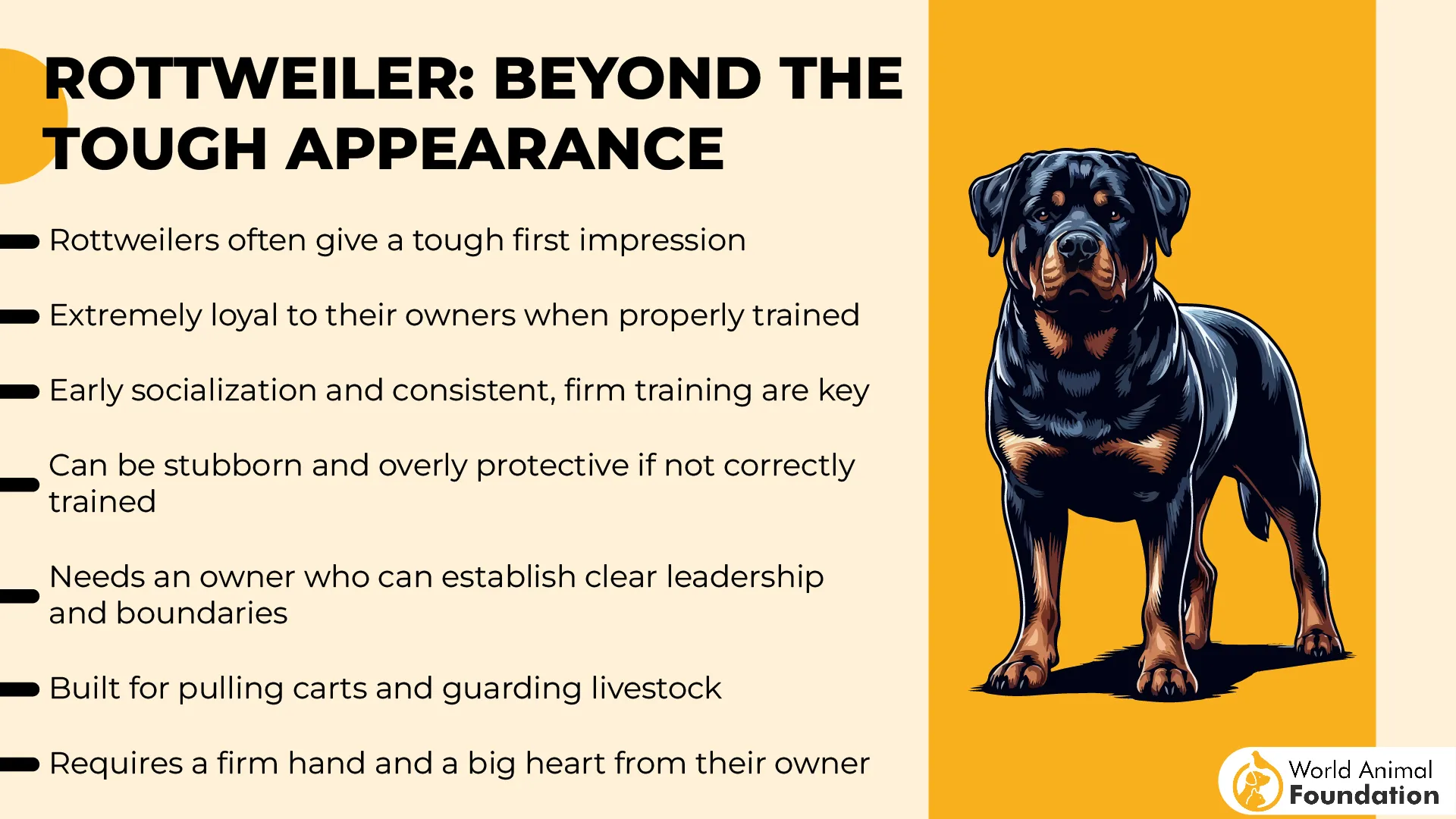
A Rottweiler’s bite force? Around 328 PSI. Yep, that’s powerful—but it doesn’t mean they’re out for blood. In fact, most Rotties would rather hang with their humans than use that bite unless absolutely necessary. They’re intelligent and quick learners, though they may toss in a little stubborn streak now and then.
With the right training and love, they’ll become one of the best companions you’ve ever had—smart, fearless, and always ready to have your back
2. German Shepherd
Meet the German Shepherd—a breed that’s as brainy as it is brawny. Originally developed in Germany from hardworking herding dogs, this breed quickly proved it was more than just a farmhand. With a sleek, strong build and a dense, weather-resistant thick coat, German Shepherds are as equipped for the outdoors as they are for complex tasks.
One of the smartest dog breeds around, German Shepherds are quick learners and eager to please. But don’t mistake their intelligence for passivity—they need firm, consistent guidance. Without it, they might start calling the shots at home. With the right training, though, they shine as loyal, obedient companions and make excellent family pets.
These pups don’t just look tough—they’ve got bite to match, with a force measuring between 238–291 PSI. That’s part of why they’re such naturals in military, law enforcement, and protection work. But their strength isn’t just physical—it’s also in their determination and unshakable loyalty.
While their protective nature is one of their strongest traits, German Shepherds are also incredibly versatile. From search-and-rescue missions to guide work and therapy, their talents are practically endless.
3. Alaskan Malamute
With its wolf-like beauty and sheer physical power, the Alaskan Malamute is one of the oldest and strongest sled dog breeds out there. Built like a tank and powered by endless endurance, this dog was born to work—and work hard.
Originally bred by the Malemiut people of Alaska, these dogs were prized for pulling heavy sleds, hauling supplies, and even helping hunters track down seals and polar bears.
While they once carried mail, freight, and gold through snowy mountain passes, today’s Malamutes have traded in their pack loads for playtime and cuddles (though they’d still prefer a job to do!). They’ve participated in everything from World War missions to dog sports like skijoring, backpacking, and weight-pulling.
Alaskan Malamutes are not just strong—they’re strong-willed, too. Independent, intelligent, and often stubborn, they need firm, confident leadership to keep their inner boss in check. Training them takes patience, but when it comes to sledding or pulling? They’re absolute naturals. Expect a bit of mischief along the way—they’ve got a playful streak and a surprisingly good sense of humour.
These snow giants aren’t ideal for everyone. Their size, energy, and determination can be a bit much for small kids or seniors. But for the right owner—someone who’s ready to lead, train, and provide plenty of exercise—the Alaskan Malamute is an incredible partner full of heart, loyalty, and adventure.
4. Cane Corso
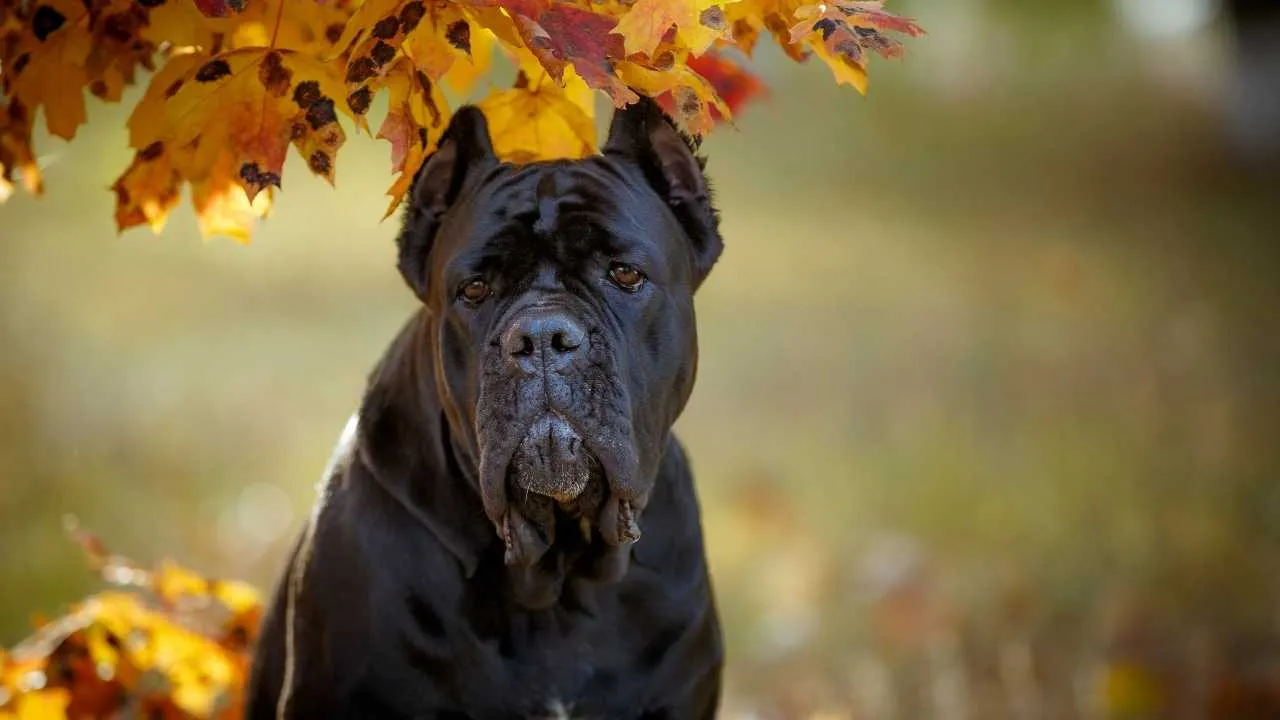
Straight from ancient Rome and bred specifically for strength and loyalty, the Cane Corso is both majestic and muscular. Descended from Molossian war dogs, this Italian breed once guarded farms, herded livestock, and even hunted wild boars. Its name translates to “bodyguard dog”—a fitting title.
Cane Corsi has one of strongest bite forces nearing 700 PSI. Their massive build commands respect. But with consistent training from young age, it becomes a loyal, protective companion. While slow to trust strangers and not always dog-friendly, this breed bonds deeply with its humans and responds well to firm, consistent guidance.
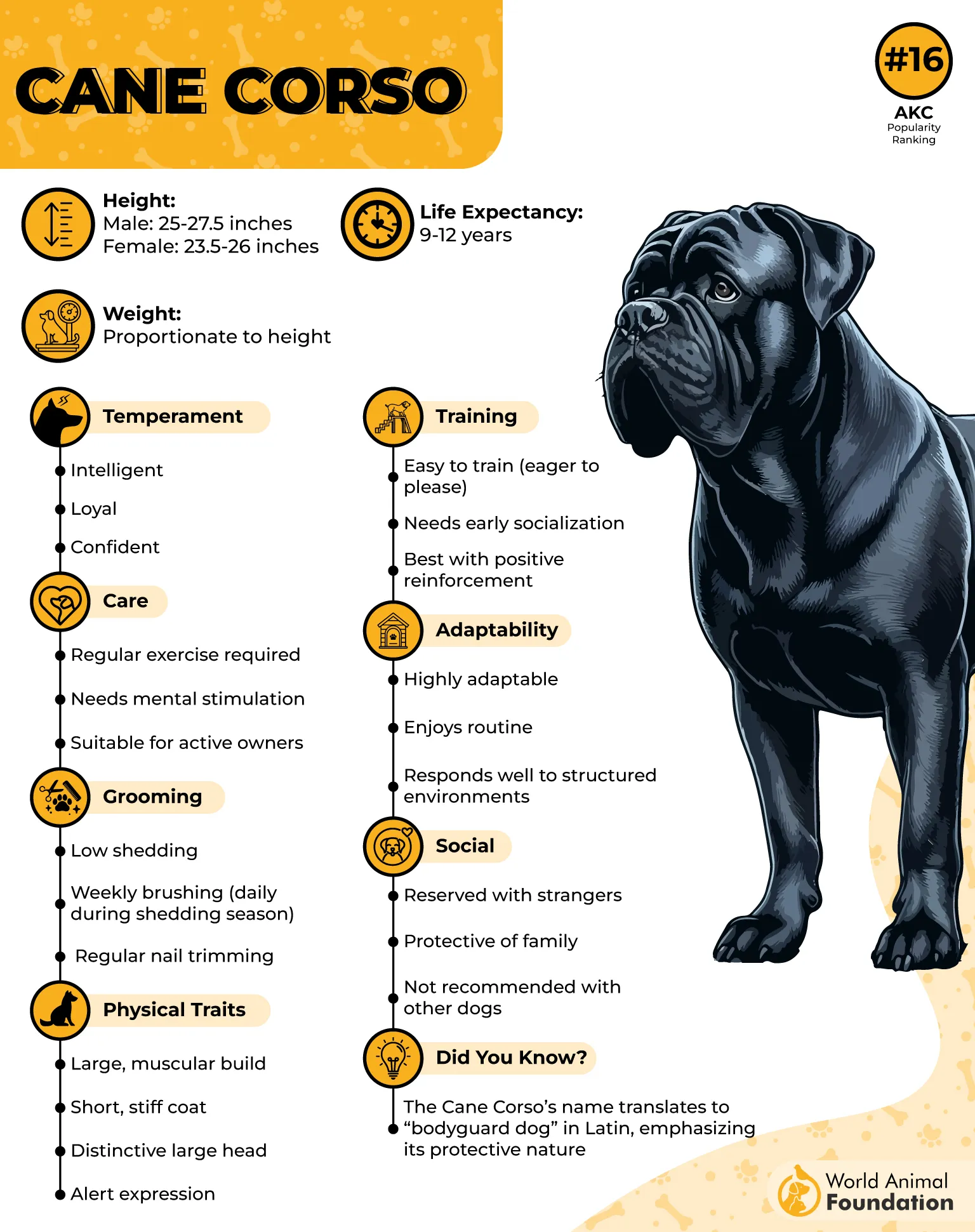
The Cane Corso is strong, independent, and devoted dogs, best suited to experienced owners. They’re not ideal for families with small children or the elderly and may struggle in multi-dog homes. Still, with structure and early socialization, they make excellent guardians.
Physically, the Cane Corso has a broad, rectangular frame, strong legs, and a surprisingly graceful gait. Their boxy muzzles and high-set ears give them a commanding look. While ear cropping and tail docking are sometimes done, they’re cosmetic and unnecessary.
These noble protectors live about 9 to 12 years, longer than many large breeds. With early training, regular exercise, and dedicated care, the Cane Corso can be a loving companion in the right home.
5. American Pit Bull Terrier
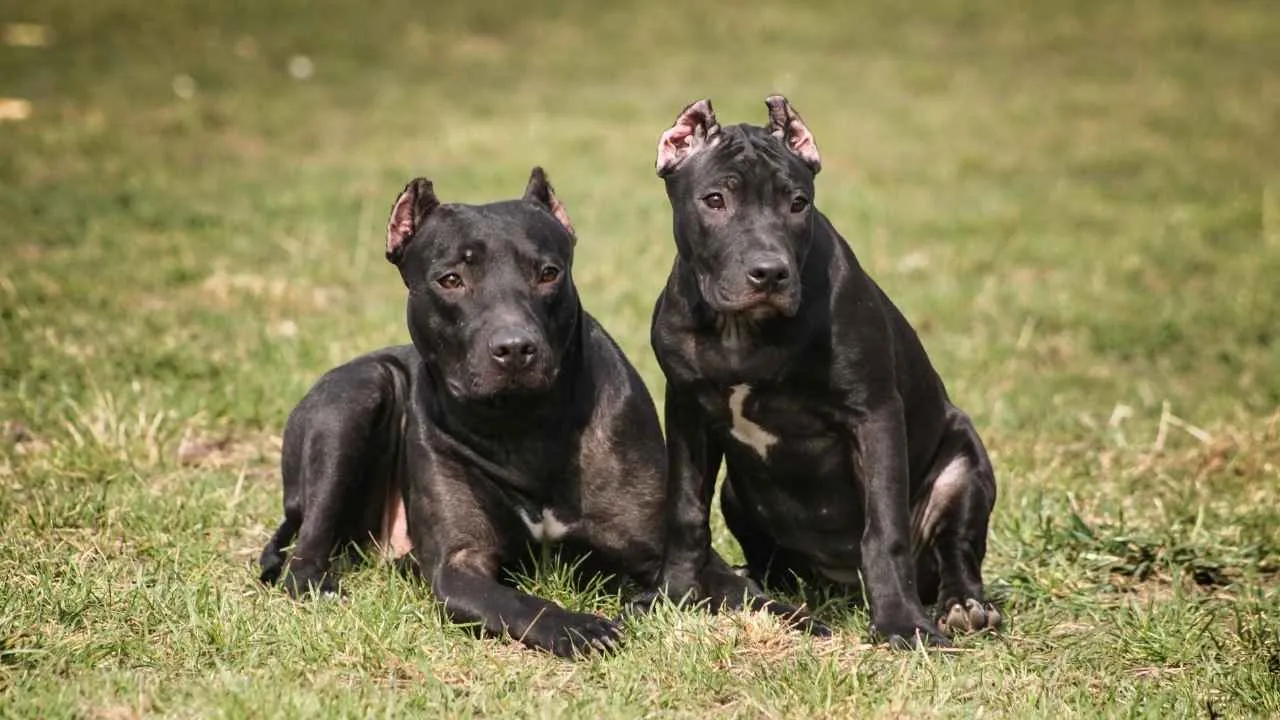
Originally hailing from the British Isles, the American Pit Bull Terrier (APBT) made its way to the United States in the 1800s with English immigrants. Rooted in a strong lineage of bulldogs and molossoid dogs once used for hunting and working, the breed gained quick popularity across America for its strength, stamina, and unshakable loyalty.
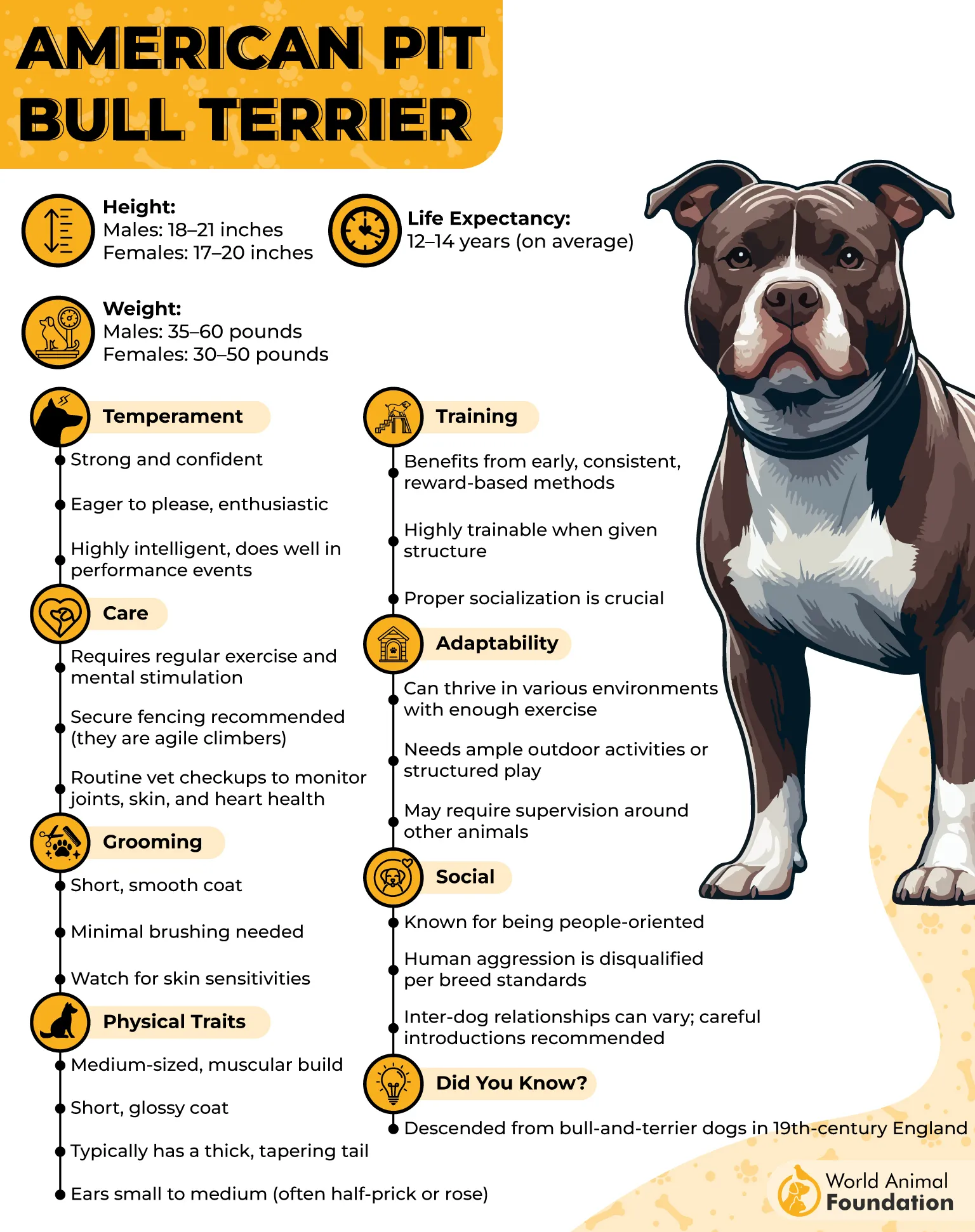
As noted by Britannica, American Pit Bull Terrier was developed from game hunters and tough terriers once used in now-outlawed blood sports. But beyond the brawn lies an energetic, confident, and people-loving pup who’s eager to bond with its human pack. With proper obedience training and early socialization, these dogs become playful, affectionate and great family pets.
The American Pit Bull Terrier has an enthusiastic spirit, a courageous nature, and an intense desire to please. However, due to their terrier tenacity and strong physical build, these dogs do best with experienced owners who can offer firm yet loving guidance.
While the breed has faced its share of unfair stereotypes, those who truly know the American Pit Bull Terrier see a fiercely loyal dog with a goofy grin and a heart full of love. With the right upbringing, this powerful pup can become the ultimate best friend.
6. Mastiff
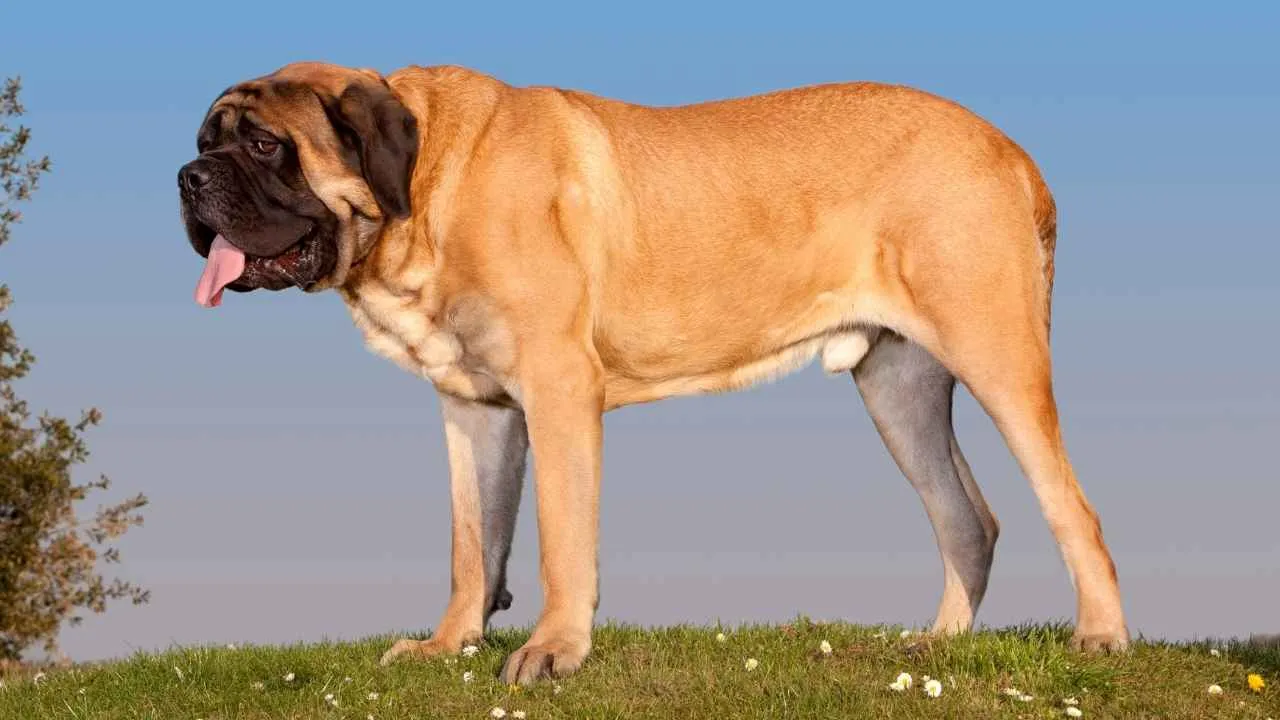
The Mastiff is a dog of impressive stature and even more impressive history. Originating in medieval England but with roots tracing back thousands of years to ancient European and Asian civilizations, this noble breed has long been revered as both a guardian and a companion.
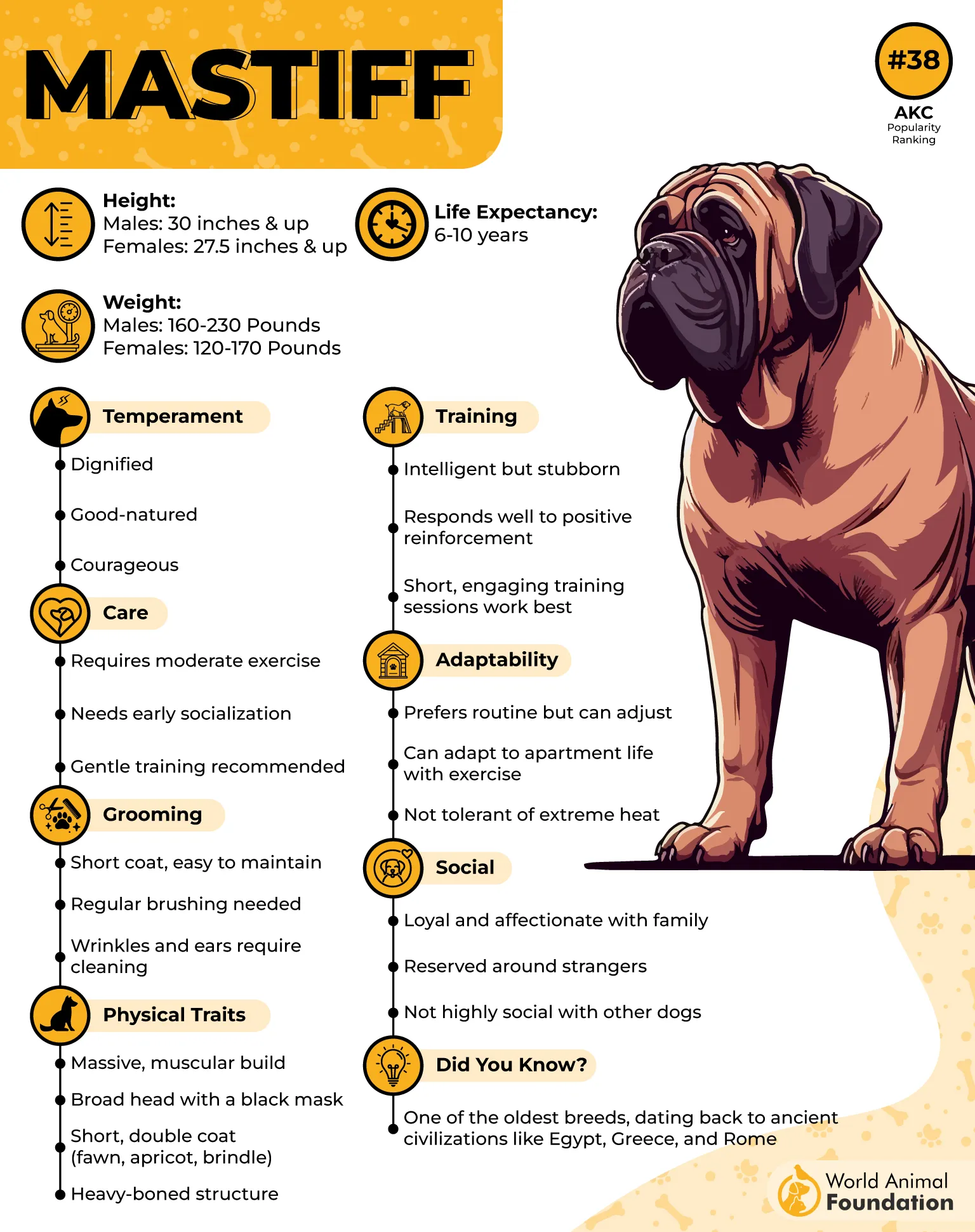
With a broad head, drooping ears, and a short, dense coat that comes in shades of apricot, fawn, silver fawn, or brindled with black markings, this breed carries a commanding presence without the attitude to match.
Loyal and affectionate, the Mastiff thrives in a family setting and often sees itself as a lapdog, despite weighing 120 to 230 pounds. Friendly with loved ones but reserved around strangers, they’re typically good with other pets and make excellent, non-aggressive watchdogs. From ancient battlefields to modern homes, the Mastiff remains a dignified, devoted, gentle giant—always ready for a cuddle.
Mastiffs have a relatively short lifespan of 6–10 years and are prone to joint health issues such as hip dysplasia and gastric dilatation-volvulus (bloat).
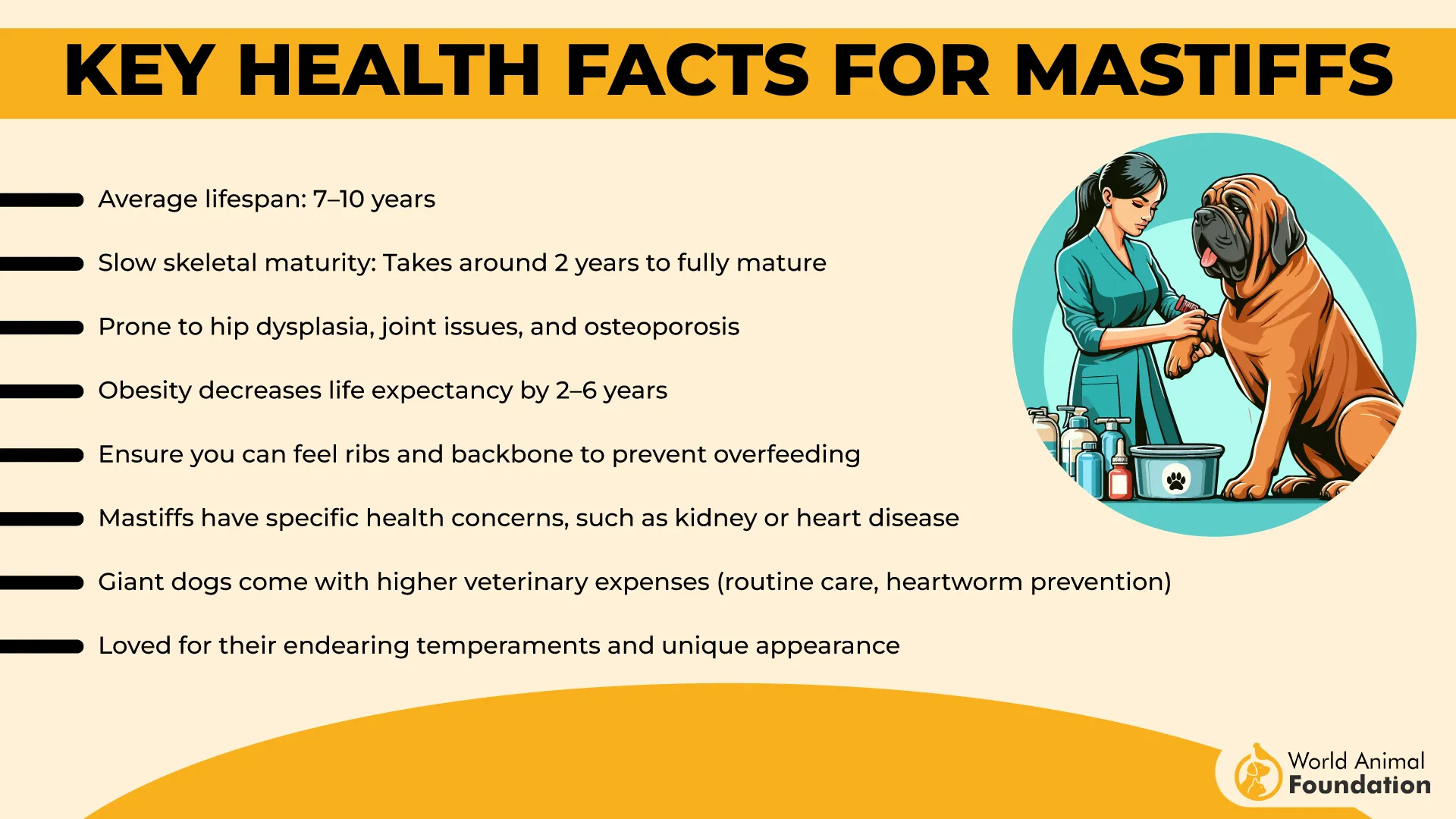
While adults are calm, their sheer size demands experienced handling, especially during training. Short bursts of play are more their speed once they reach maturity.
Did you know?
The Mastiff is one of the most ancient and valued breeds with a long history of being used for hunting, guarding, and as war dogs – and many countries in the world have their own versions.
7. Akita
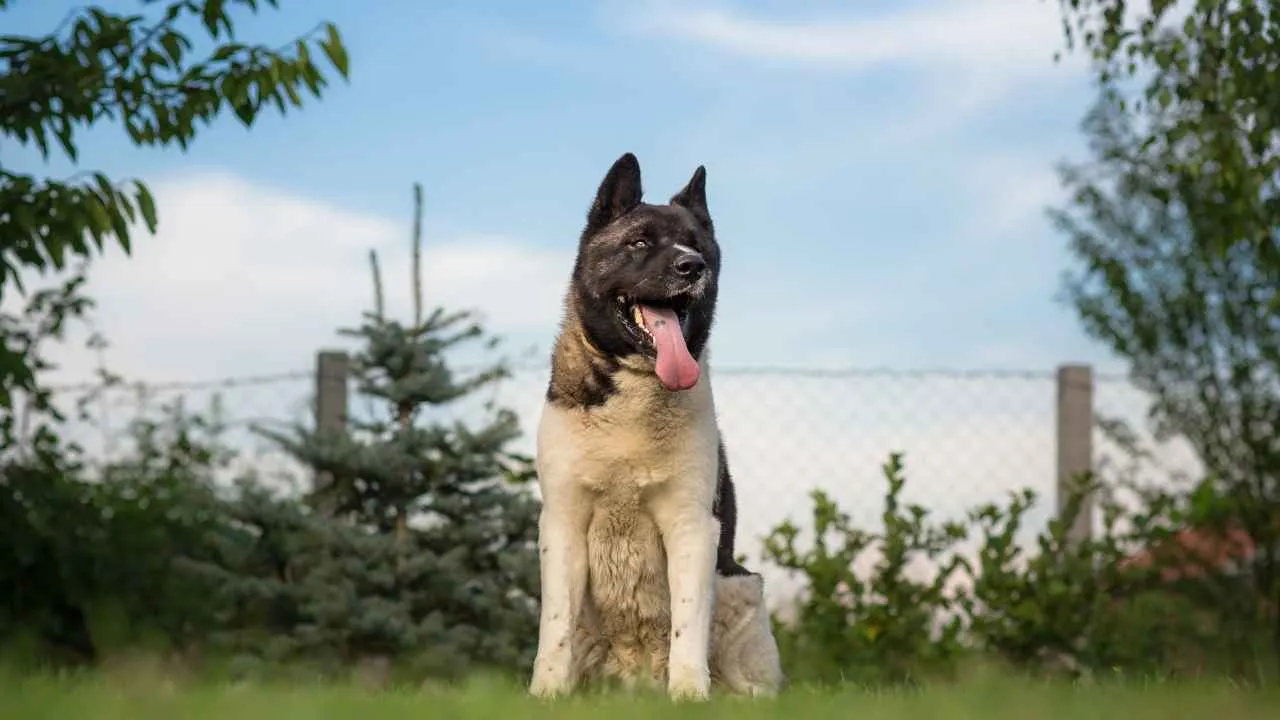
The Akita is a powerful, striking dog from Japan, originally bred for hunting and guarding. Males typically reach 26–28 inches and 110 pounds, with females slightly smaller at 24–26 inches and around 80 pounds. With a muscular build, broad chest, and a full curled tail, the Akita carries a dignified, commanding presence.
Their dense double coat suits cold climates, featuring a soft undercoat and a coarse outer layer. Coat colours include white (without a mask), brindle, and pinto. Some Akitas have longer coats—not show standard, but admired for their plush look.
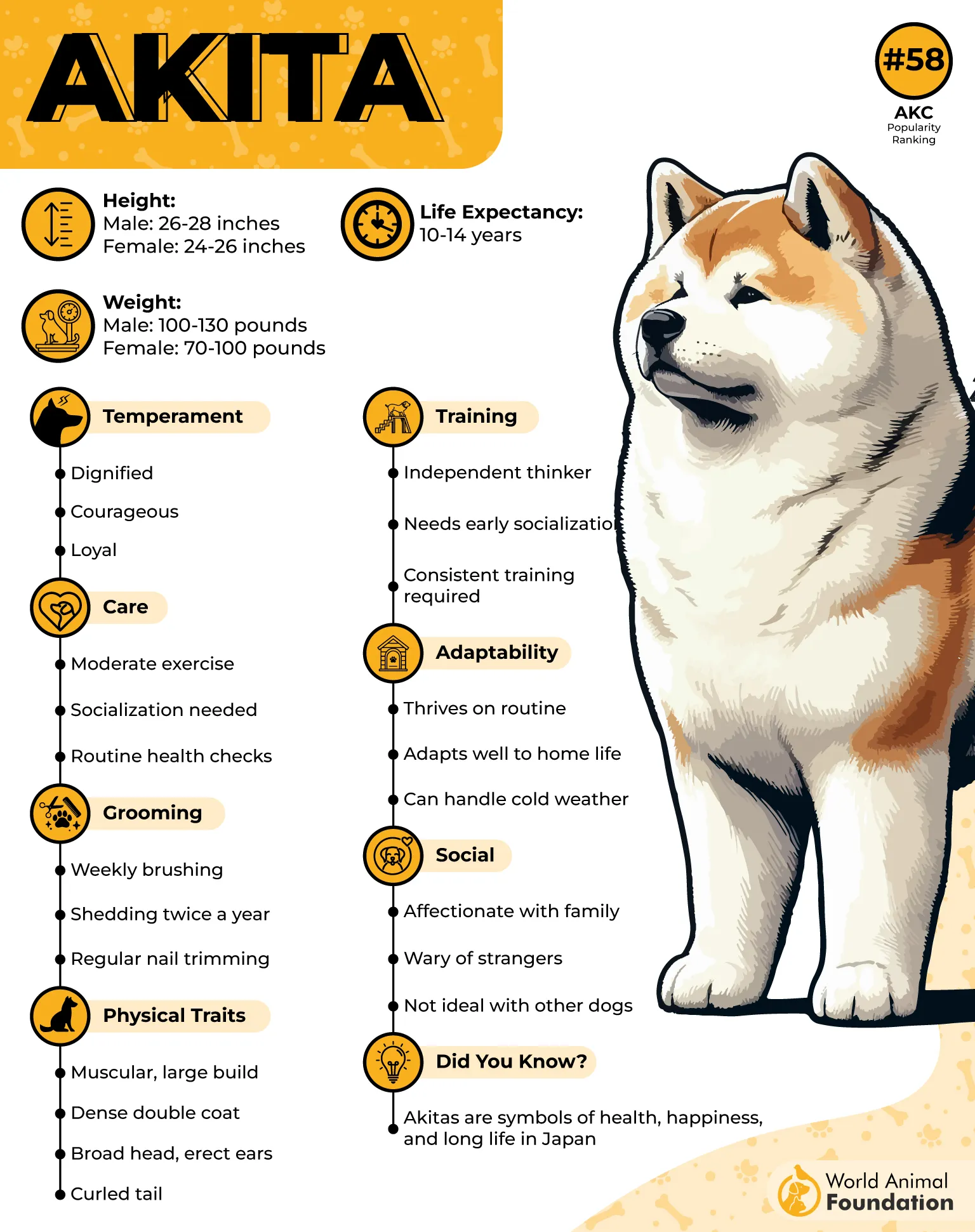
Loyal and reserved, Akitas bond deeply with family but remain aloof with strangers. Calm and serious, they’re affectionate and even playful with those they trust. Their protective instincts are strong, making them excellent watchdogs who bark only when needed.
Bred for independence, Akitas prefer being the only dog and may show dominance toward unfamiliar animals. While trainable, they need firm, respectful guidance and mental stimulation to prevent boredom or destructive behaviour. Their size and strength make them better suited to experienced owners.
The Akita is noble, extremely loyal, and has a fearless attitude. This is not ideal for first-time dog owners. With confident leadership and proper training, they become devoted protectors and quiet, great family dogs.
Did You Know?
As noted by AKC, Japanese parents often receive a small statue of an Akita when their child is born. The Akita is not only a symbol of protection but also one of health, happiness, and long life. In 1931, the government of Japan declared the Akita breed to be a national monument and one of Japan’s national treasures.
8. Great Dane
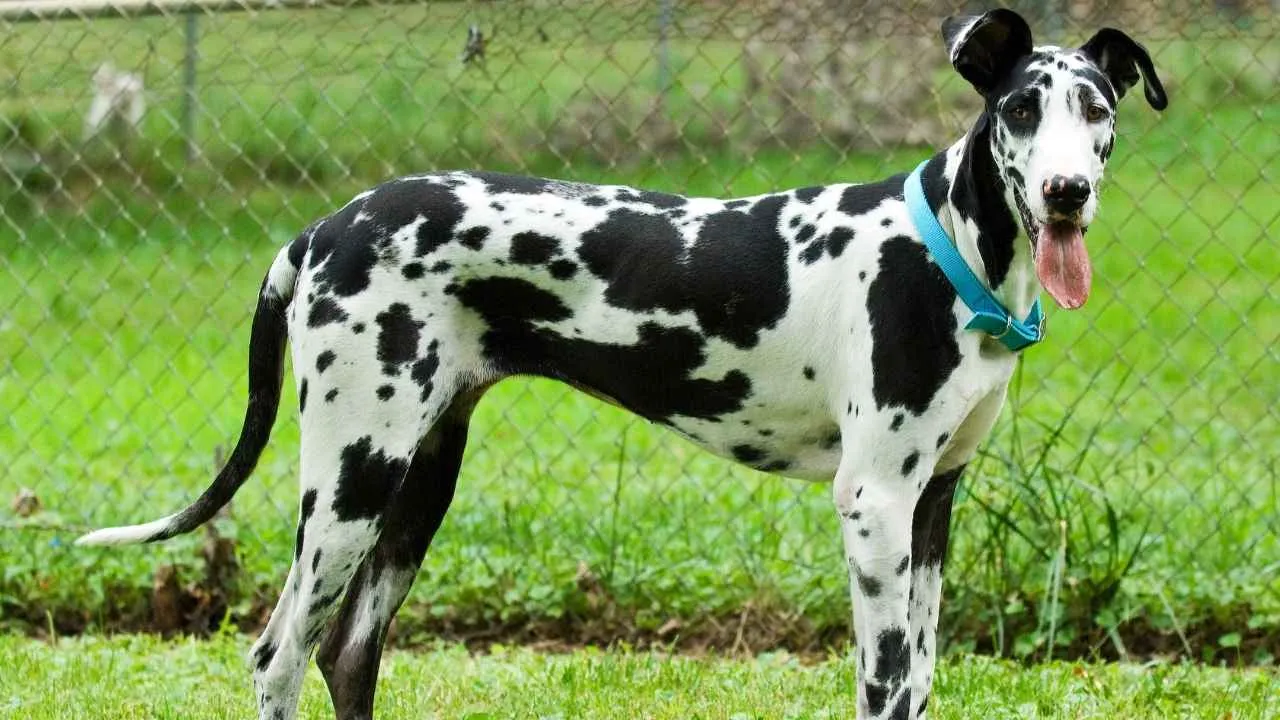
The Great Dane is a regal and towering breed that originated in Germany over 400 years ago. Originally bred for hunting wild boar, this giant breed combines strength, elegance, and a surprisingly sweet nature.
Known in Germany as the Deutsche Dogge (German Mastiff), the breed is often misattributed to Denmark due to its French name, Grand Danois, meaning “Big Danish.” Standing tall as the largest among working breeds, the Great Dane commands attention with its sleek, muscular frame and square-jawed head.
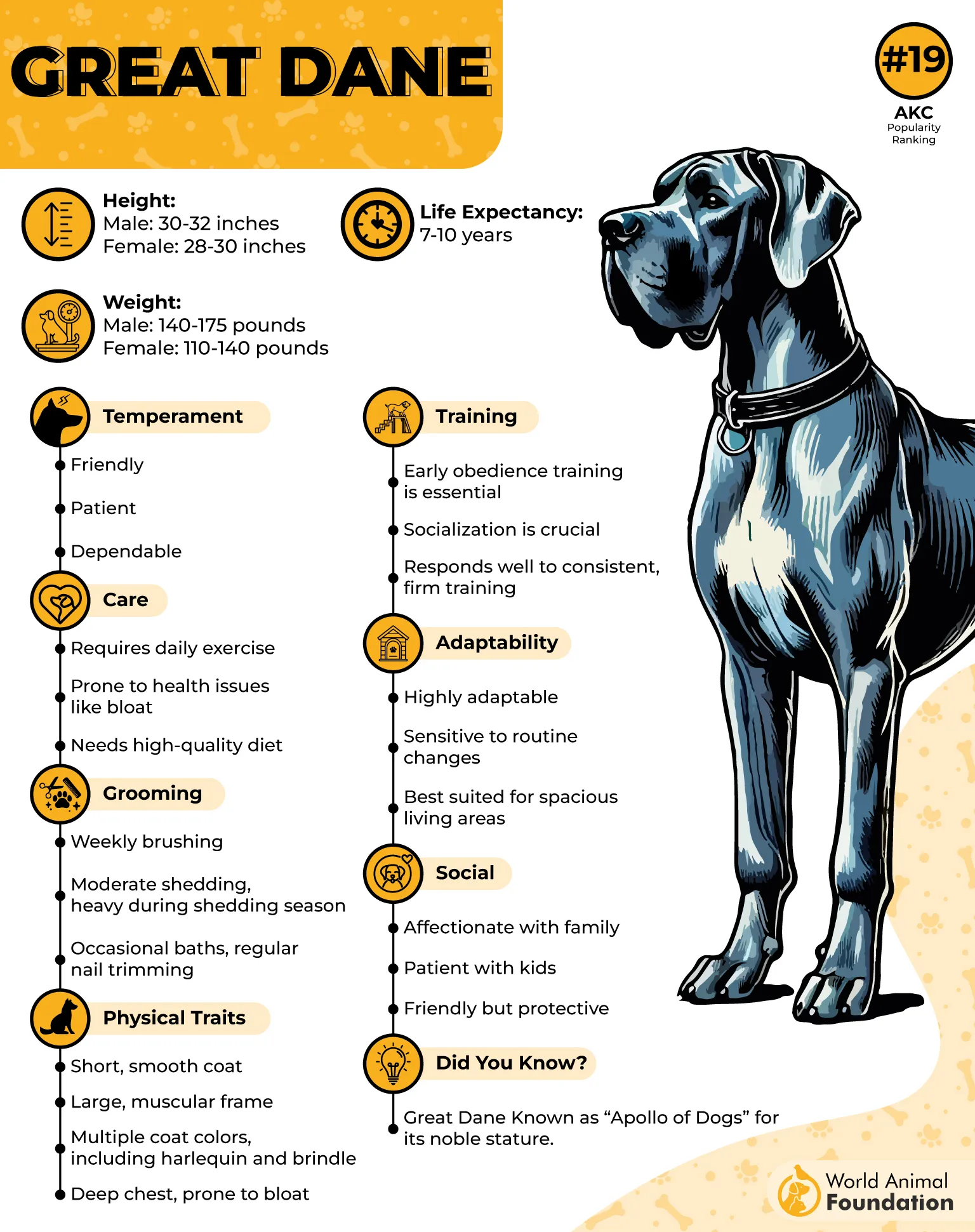
PetMD states that despite their intimidating size, Great Danes are famously gentle and affectionate. They’re known for their calm demeanor and strong loyalty toward their families, often earning the nickname “gentle giant.” Danes tend to be friendly even with strangers and other pets, making them well-suited for social homes.
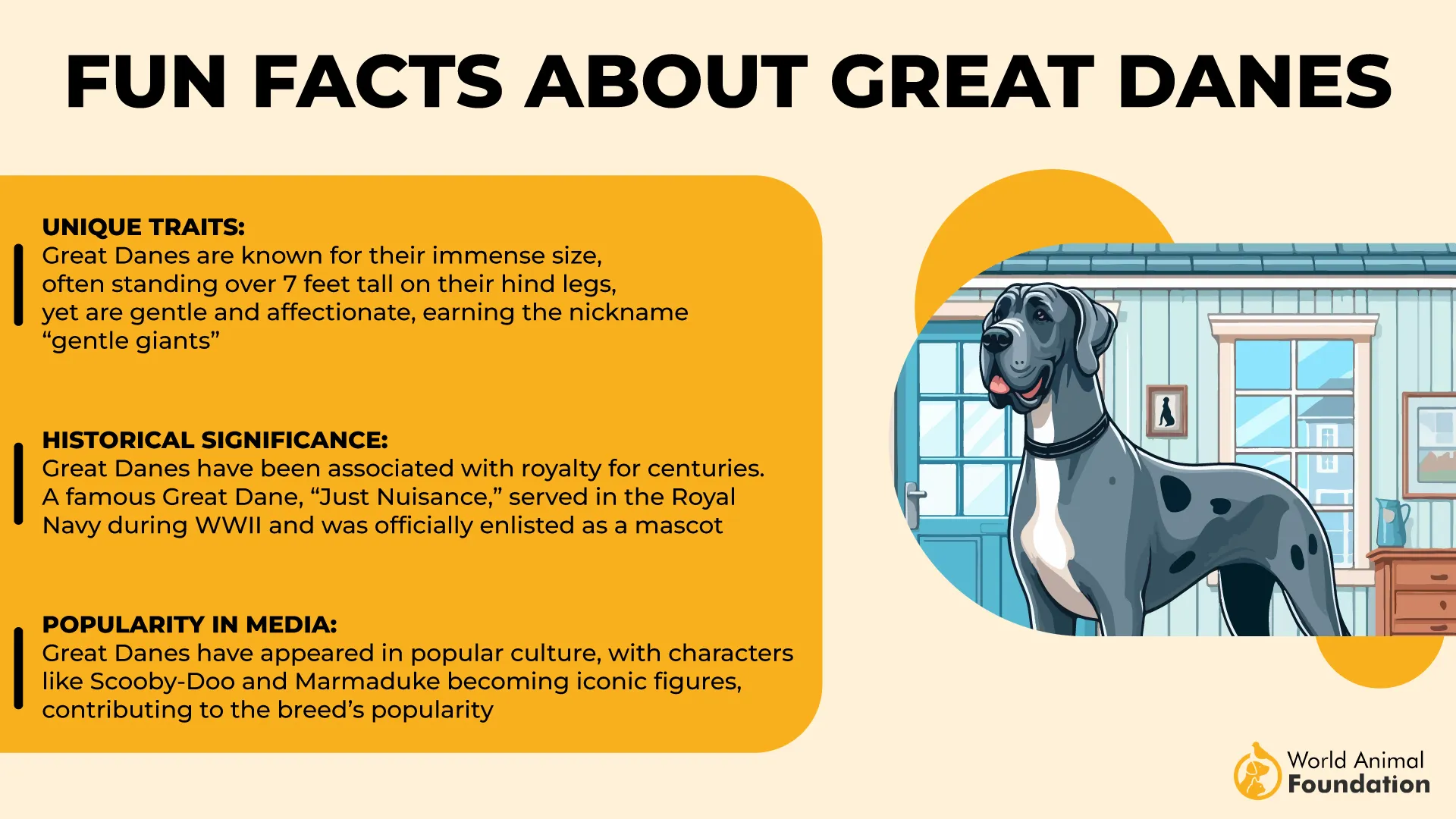
While playful, they don’t need constant stimulation and are generally content lounging by your side. Their low energy level and good-natured attitude make them great companions, though their size means they may be a bit much for small children or elderly handlers.
The bite force of a Great Dane is stronger than a human’s and on par with breeds like the German Shepherd. While they are capable protectors when needed, Danes are not aggressive by nature and rarely bark without cause. Their presence alone often acts as a powerful deterrent.
Did you know?:
According to legend, Great Danes were the Ghostbusters and Scooby-Doos of the medieval world, reportedly set loose on properties to scare off evil spirits.
Zeus, the world’s tallest Great Dane on record, measured 41 inches tall at the shoulder, and stretched over 7 feet tall when standing on his hind legs.
9. Rhodesian Ridgebacks

The Rhodesian Ridgeback stands out for its unique backward-growing ridge of hair along its spine—an iconic trait inherited from native African hunting dogs. This muscular, athletic hound was developed in South Africa and earned the nickname “African Lion Hound” for its role in tracking and cornering lions.
With a sleek, short coat that ranges from glossy wheaten to reddish-brown and expressive drop ears, the Ridgeback is as striking as it is capable.
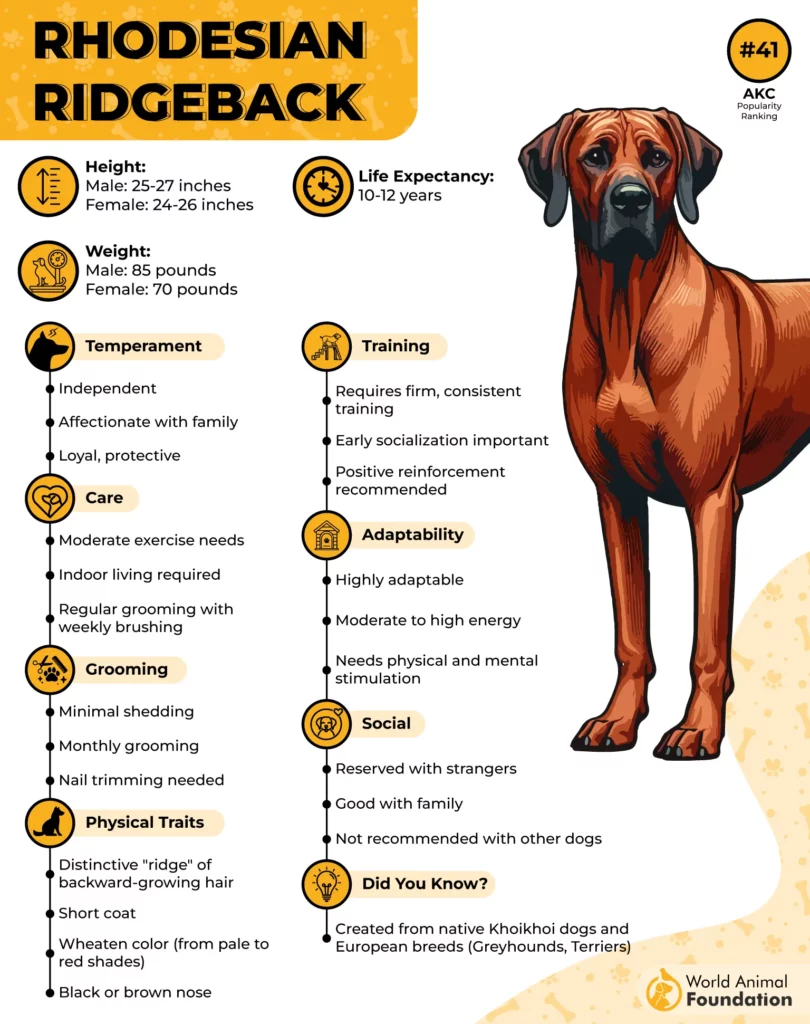
Known for loyalty and affection toward family, Ridgebacks are naturally reserved and can be territorial without proper socialization. Their strong protective instinct means they stay alert without formal guard training. Confident and independent, they suit experienced owners who offer firm, positive leadership.
Ridgebacks are smart but headstrong; they need consistent, patient training from an early age. Exposure to diverse people, dogs, and environments is essential to manage their willfulness and strength. Positive reinforcement works best to prevent challenges, especially for novice handlers.
Moderate in energy, Ridgebacks enjoy regular exercise and purposeful activities like hiking or running. They generally get along with household pets but may react aggressively to unfamiliar dogs due to their prey drive. With proper training, they become devoted companions and natural protectors—though their size and strength may not fit well with small children, elderly family members and homes with other animals.
Conclusion
The world of powerful dogs encompasses a wide range of unique breeds, from the formidable Kangal Dog and Dogo Argentino to the strong and versatile Doberman Pinscher and Belgian Malinois. Fighting dogs like the American Bulldog and English Bulldog showcase impressive strength.
Working dogs such as Siberian Huskies and Irish Wolfhounds demonstrate endurance and skill, pulling sleds or guarding against human threats. Large breeds like the English Mastiff, Tibetan Mastiff, and Saint Bernard stand out for their sheer size and protective nature. Medium-sized dogs also play a vital role in this canine world, balancing strength with agility.
Pet parents considering these strong breeds should remember that many dogs require proper training and socialization, especially in homes with older children. The strength of these dogs reflects their unique heritage and purpose within the diverse spectrum of powerful dogs.


